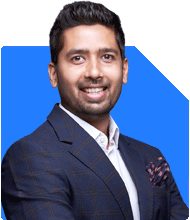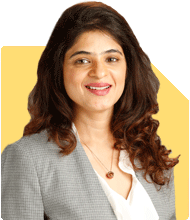37 Yr Old Woman Seeking Advice to Plan Savings
Milind Vadjikar |1236 Answers |Ask -Follow
Insurance, Stocks, MF, PF Expert - Answered on Jan 31, 2025
He has a mechanical engineering degree from Government Engineering College, Sambhajinagar, and an MBA in international business from the Symbiosis Institute of Business Management, Pune.
With over 16 years of experience in stock investments, and over six year experience in investment guidance and support, he believes that balanced asset allocation and goal-focused disciplined investing is the key to achieving investor goals.... more
.jpg)
Hi Sir. I am a 37 year old woman, single (unmarried) living with my mom, my younger brother and sister in law. I recently went through a layoff. This is my current portfolio, if you can advice if this is good or needs any adjustments and can help me plan my savings better. My usual monthly spends on an average is around ₹35-40,000. Current portfolio till date PPF ₹8,00,000 LIC Jeevan Anand 149 policy (₹4,00,000) PF ₹12,00,000 FD ₹31,00,000 MF ₹2,70,000 (current value) lump sum invested in Nippon Tax saver, ICICI prudential long term Tax Saver and Axis Long term Tax Saver Funds Savings Account ₹37,66,000 Gold ₹30,00,000 (bought jewellery)
You may keep max 3-4 L in your savings account and invest the balance funds in mutual funds as per your risk profile.
Apart from this you need to continue with PPF and open NPS account and invest regularly for retirement planning.
Do not fall for any endowment insurance policies because they provide abysmal return on your investment.
It is your personal choice to buy gold jewellery as much as you like but for investment sake best way to invest in gold is through SGBs or gold mutual funds.
Best wishes;
X: @mars_invest
You may like to see similar questions and answers below
Omkeshwar Singh | Answer |Ask -Follow
Head, Rank MF - Answered on Aug 11, 2021
Kirtan A Shah |77 Answers |Ask -Follow
MF Expert, Financial Planner - Answered on Sep 29, 2023
Ramalingam Kalirajan |8459 Answers |Ask -Follow
Mutual Funds, Financial Planning Expert - Answered on May 28, 2024
Ramalingam Kalirajan |8459 Answers |Ask -Follow
Mutual Funds, Financial Planning Expert - Answered on May 28, 2024
Dr Nagarajan J S K |406 Answers |Ask -Follow
NEET, Medical, Pharmacy Careers - Answered on May 16, 2025

Based on my understanding, no one usually requests a birth certificate at this age. Your inquiry relates to the period before and after independence. In those days, they would accept the SSLC book if you didn't have a birth certificate. However, I am not sure if that was the case during your time.
Instead, you can present your Aadhaar card, which likely includes your original date of birth. You can utilize that information.
If my response doesn't fully address your concerns, I recommend consulting a Notary Public for further assistance.
BEST WISHES.
THANK YOU SIR.
with regards
Prof Suvasish Mukhopadhyay |651 Answers |Ask -Follow
Career Counsellor - Answered on May 16, 2025
Prof Suvasish Mukhopadhyay |651 Answers |Ask -Follow
Career Counsellor - Answered on May 16, 2025
Radheshyam Zanwar |1634 Answers |Ask -Follow
MHT-CET, IIT-JEE, NEET-UG Expert - Answered on May 16, 2025
Radheshyam Zanwar |1634 Answers |Ask -Follow
MHT-CET, IIT-JEE, NEET-UG Expert - Answered on May 16, 2025
Ashwini Dasgupta |107 Answers |Ask -Follow
Personality Development Expert, Career Coach - Answered on May 16, 2025
Ramalingam Kalirajan |8459 Answers |Ask -Follow
Mutual Funds, Financial Planning Expert - Answered on May 16, 2025
Ramalingam Kalirajan |8459 Answers |Ask -Follow
Mutual Funds, Financial Planning Expert - Answered on May 16, 2025
Milind Vadjikar |1236 Answers |Ask -Follow
Insurance, Stocks, MF, PF Expert - Answered on May 16, 2025
Milind Vadjikar |1236 Answers |Ask -Follow
Insurance, Stocks, MF, PF Expert - Answered on May 16, 2025


























